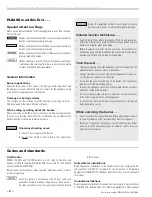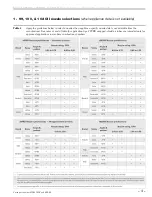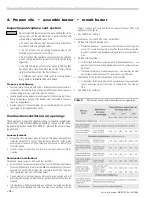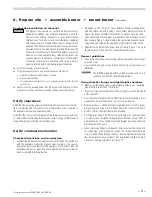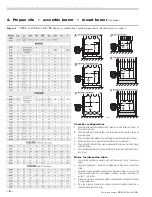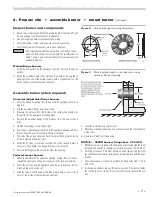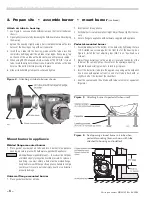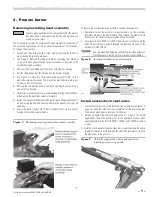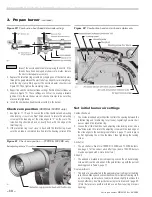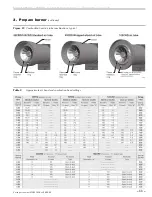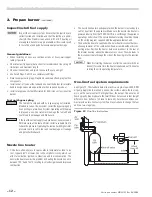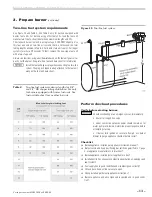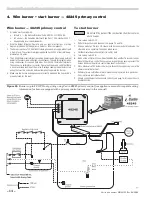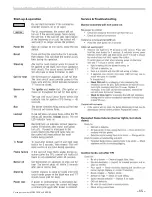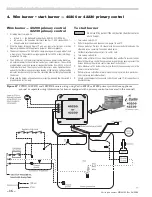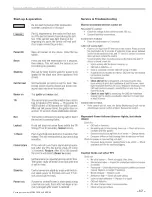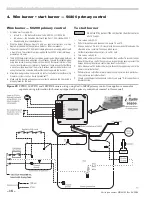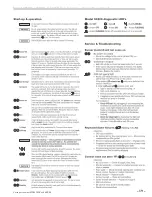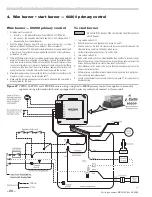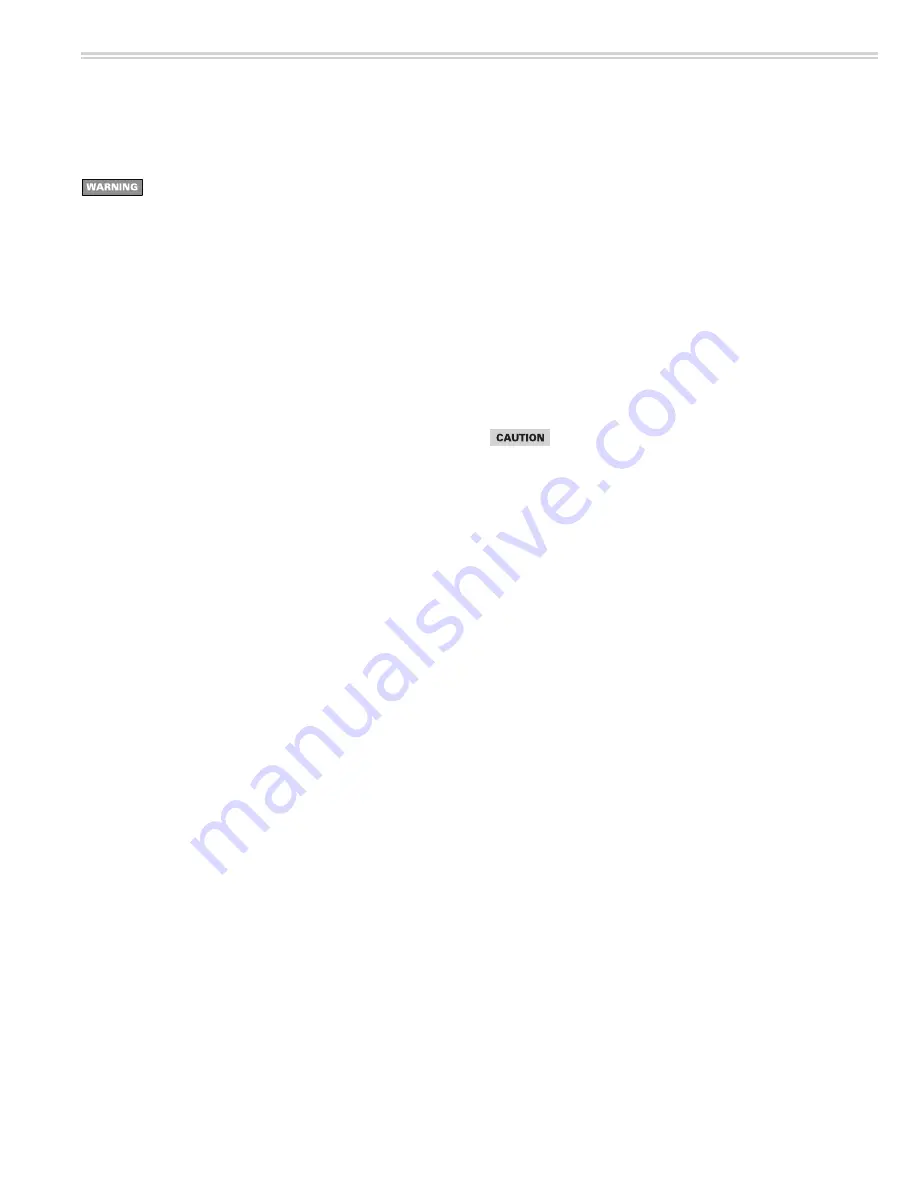
Model 99FRD, 100CRD, & 102CRD oil burners — Instruction manual
Carlin part number MN99102 Rev. 08/20/08
– 5 –
Combustion/ventilation air checklist
The burner may operate successfully under momentary
downdraft conditions, but sustained downdraft is unsafe.
This can occur with an inadequate or incorrectly installed
chimney/vent. It can also occur in rooms/buildings equipped
with exhaust fans or unsealed return air ducts. Always check
operation of the burner under all conditions to verify vent system
operates correctly. You may have to interlock the burner with
exhaust fans to shut burner off when fan operates; or provide
make-up air to the appliance room sufficient to prevent any
negative pressure in the space. Failure to correct downdraft
or negative room pressure operation could result in severe
personal injury, death or substantial property damage.
❏
Verify that openings are unobstructed.
❏
Verify that appliance space and air source spaces are free of:
• Gasoline or other flammable liquids or vapors.
• Combustible materials.
• Air contaminants and chemicals, such as laundry products, paint, thinner,
varnish, etc.
❏
Confirm with the building owner that the area will be kept free of these
materials at all times and that air openings will be kept unobstructed.
2. Prepare site • assemble burner • mount burner
(continued)
Verify combustion chamber
Chamber dimensions and construction
• If retrofitting the burner to an appliance, install the burner in accordance
with the appliance instruction manual, when available. If no specific
application data is available from the appliance manufacturer, read the
guidelines in Figure 1, page 6, to check whether the burner is likely to
work acceptably in the application.
Verify clearances
Verify that the burner/appliance will maintain all clearances from combus-
tible construction and clearances for service/maintenance as required in
the appliance manual and applicable codes.
Verify that the vent system components maintain all necessary clearances
to combustible construction, including the correct design of thimbles and
insulation where penetrating combustible walls.
• Illustrations A to F in Figure 1 show different chamber configurations
with and without refractory linings. The chamber dimensions listed in
Figure 1 depend on whether the chamber is lined or water-backed.
• Do not attempt to fire the burner in a chamber with dimensions smaller
than shown in Figure 1, page 6, unless the application has been specifi-
cally tested and listed by the appliance manufacturer and/or Carlin.
• Chambers with dimensions larger than shown in Figure 1, page 6,
should not have much effect on combustion/performance.
General guidelines
• Clean all appliance flues and heating surfaces thoroughly, removing all
soot and scale.
• Seal all joints and gaps using furnace cement to prevent excess air
infiltration.
The 99FRD wrapped-shield air tube must be used only in
wet-base combustion chamber applications.
Using chamber linings and lightweight chambers
• When using refractory liners or lightweight chambers, use insulating-
type refractory rated 2300°F minimum.
• You must install a target wall liner if flame length is close to the length
of the chamber.
• Use a floor liner when possible. The floor liner will improve firing in most
applications. Extend floor liner 3 to 4 inches up side wall.
• Target wall liners — Corbel the top of target wall liners 1½ to 2½ inches
deep and extend at least 3 to 4 inches above the center of the flame.
• Use pre-formed chamber liners when available.
• For firing rates below 0.75 GPH, it is best to apply in a refractory-lined
or stainless tube (designed for application) chamber. Lining the floor
and target wall of the chamber with lightweight insulating refractory
will accomplish the same.
• When conversion firing coal-fired units, install a combustion chamber in
the ashpit area, or fill ashpit with sand up to 2 inches above the “mud
ring” of a boiler (firing through the door). Install a lightweight refractory
liner on the target wall as in Figure 1F, page 6. Make sure the minimum
dimensions comply with those for Figure 1F.


